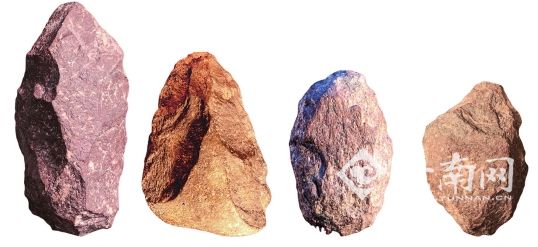 |
|
Large and elongated adze-like unifacial cobble tools [Photo/yunnan.cn] |
The Xiaodong Palaeolithic site was first found in 1981. In 2004, archaeologists conducted the first systematic investigation in the Xiaodong Cave and collected stone artifacts, which made them realize the value of the site.
From 2007 to 2015, further investigations were carried out at the site. A soil layer containing more than four meters of cultural deposits was excavated. Collected samples confirmed the Hoabinhian affinity of Xiaodong after comparisons with other materials in southeast Asian countries.
The carbon 14 dating method shows the site was occupied some 43,500 to 24,000 years ago. The bottom layer may even be older.
"Xiaodong can be regarded as a typical early Hoabinhian site, the first such site found in China and currently the oldest in Asia as well," Ji said, adding the new discovery may indicate the origins of the widespread Hoabinhian sites in southeast Asia are likely to be in the upper valley region of the Lancang-Mekong river system of Southwest China.
"The study shows that the Lancang River valley is a possible home for the Hoabinhian culture and a source of migration for modern humans and the transmission of their culture to southeast Asia," Ji said. "The early Hoabinhian adaptation in Southwest Yunnan played an important role in the Late Palaeolithic and Early Neolithic cultures in southeast Asia and South China."
The research team has spent nearly ten years on field investigations that covered tens of thousands of kilometers, and paid several visits to southeast Asian countries for comparative studies. Scholars from France and South Africa also participated in the study.
The finding results have been published online in the journal "Quaternary International" on Dec 23.